A look at some powerful ways that street furniture is used to convey messages
Bryant Park Litter Bins designed by Ignacio Ciocchini
Ciocchini is known for his work with a few Manhattan business improvement districts including the 34th Street Partnership and the Rosslyn Streetscape Plan. Ciocchini sees public space as a product and one that needs to attract clients – the clients being the people who live, work and visit the area. He believes that cities cannot be passive about attracting people and must proactively design their spaces to be alluring for people to spend their time. Ciocchini believes that street furniture should be as inviting and as comfortable as their own living room furniture and that as trends indicate that by 2050 90% of the word’s population will live in urban centres that now this is more important than it has ever been.
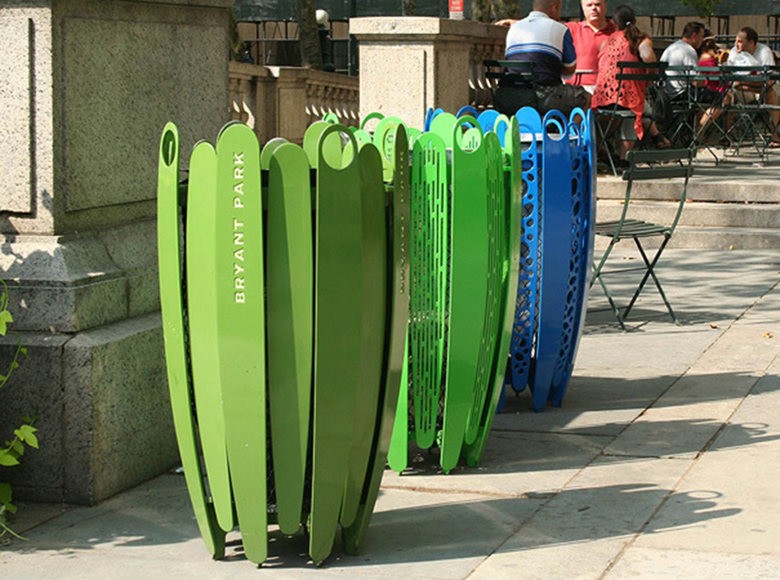
Bryant Park Litter Bins designed by Ignacio Ciocchini
Ignacio Ciocchini designed these sculptural, flower-like bins for the Bryant Park Corporation in New York The concept is that in providing attractive litter bins that people are encouraged to be responsible and dispose of their rubbish.
The design of each unit is intended to give strong clues as to its use. The trash unit has plain green petals and is in a fern green colour whilst the unit for newspapers and magazine has linear details which allude to the shape of the waste paper items it receives. The bin for bottles and cans is blue with a circular cut-out design on the petals to denote the shape of the waste items.
The outer petals of the basket are fabricated from powder-coated aluminium and the flip-up hinges and lid are fabricated from spun stainless steel plate. There are two options for the inner basket, either stainless steel mesh or polyethylene. The petals can be branded with the location or park in which they are situated.
Modified street furniture by Jeppe Hein
Danish artist, Copenhagen-born and now living in Berlin, Jeppe Hein creates a link between sculptural art and street furniture.
Hein subverted the park bench for his exhibition titled “Please Touch the Art” which was installed in 2015 until 2016 along the Brooklyn Bridge in New York. The sixteen benches are called “Modified Social Benches” and are fabricated in bright powder-coated steel in shapes that are designed to be enticing to sit upon. Curated by Nicholas Baume the exhibition is very typical of Hein in that the works are playful and inviting and intended to be the opposite of the exclusive and precious works of art found in a gallery or museum.
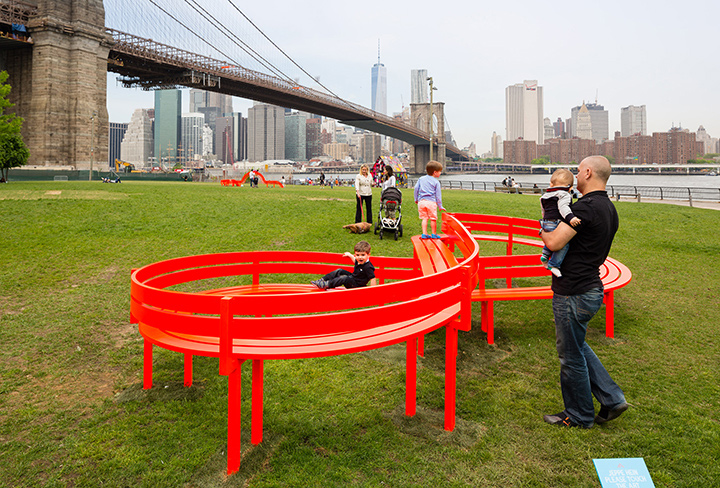
One of the sixteen benches, part of the exhibition “Please Touch the Art” along the Brooklyn Bridge, New York.
Image from publicartfund.org
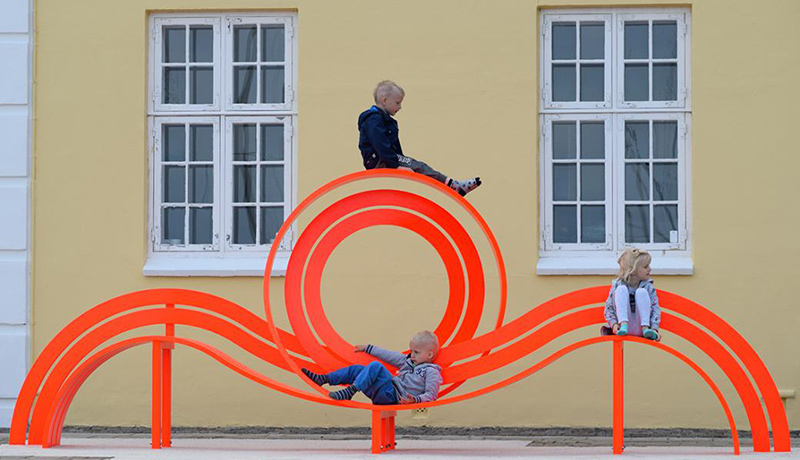
Modified Social Benches in Lemvig Harbour by Jeppe Hein. Fabricated from powder-coated steel.
Modified Social Benches have also been created for Lemvig Harbour in Denmark. The curving designs often give the impression that the piece simply runs underground. The benches are not only to sit upon but to talk about and to provide a sculptural quality to their environment. The extent to which the pieces are playful is evident in the number of children that choose to explore them.
A similar installation has been made between the metro station Kastrup and Den Blå Planet, an aquarium, at Kastrup Harbour, Denmark. The Blue Modified Social Bench is a permanent installation there.
Jeppe Hein’s Modified Social Benches have also been installed in Auckland, New Zealand in the Art & Nature Park, IMA – Indianapolis Museum of Art, Indianapolis, USA in 2010.
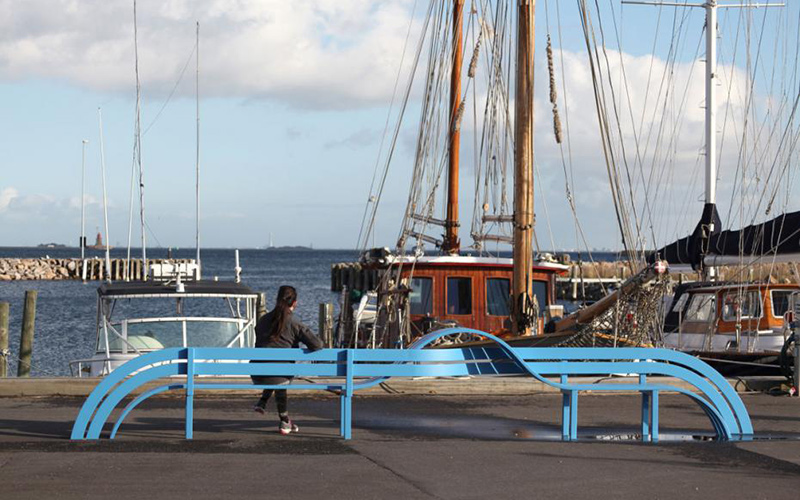
Blue Modified Social Bench at Kastrup Harbour, Denmark by Jeppe Hein. Fabricated in blue powdercoated
steel.
Ogivy and Mather’s Smarter Cities campaign for IBM
Continuing the idea of street furniture as a marketing tool, consider Ogilvy and Mather’s campaign for IBM where they installed street furniture as a way of conveying a message.
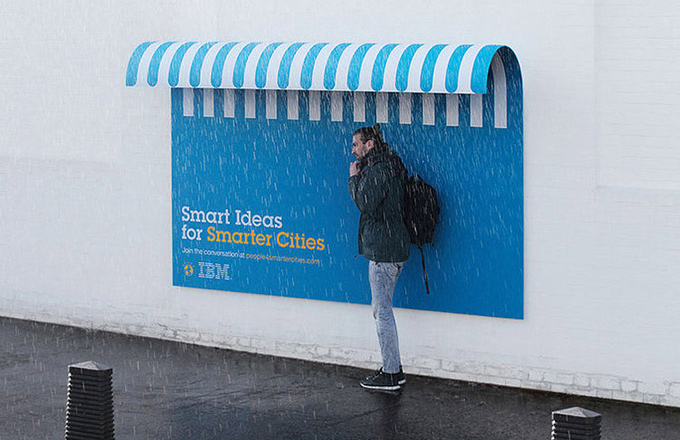
Ogilvy and Mather used street furniture installations to advertise IBM’s Smarter Cities campaign
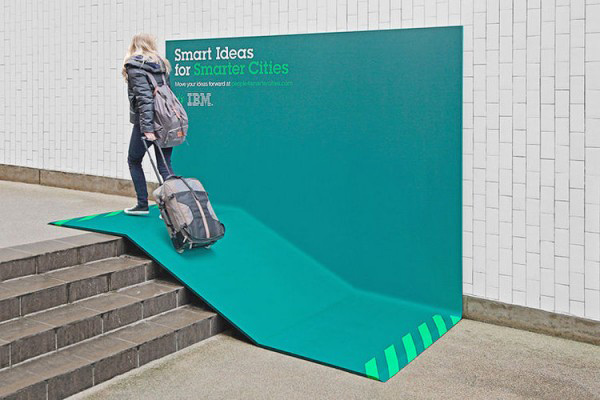
A ramp installed by Ogilvy and Mather for IBM’s Smarter Cities campaign
Instead of installing two-dimensional bill boards the added curves made the moulded powder-coated steel sheets useable by passers-by, making their day that little bit easier. Although, to be honest, I don’t know EXACTLY what they are advertising and, as someone pointed out, the ramp doesn’t meet the gradient requirements for wheelchair access. Never mind, the concept is fun and clever.